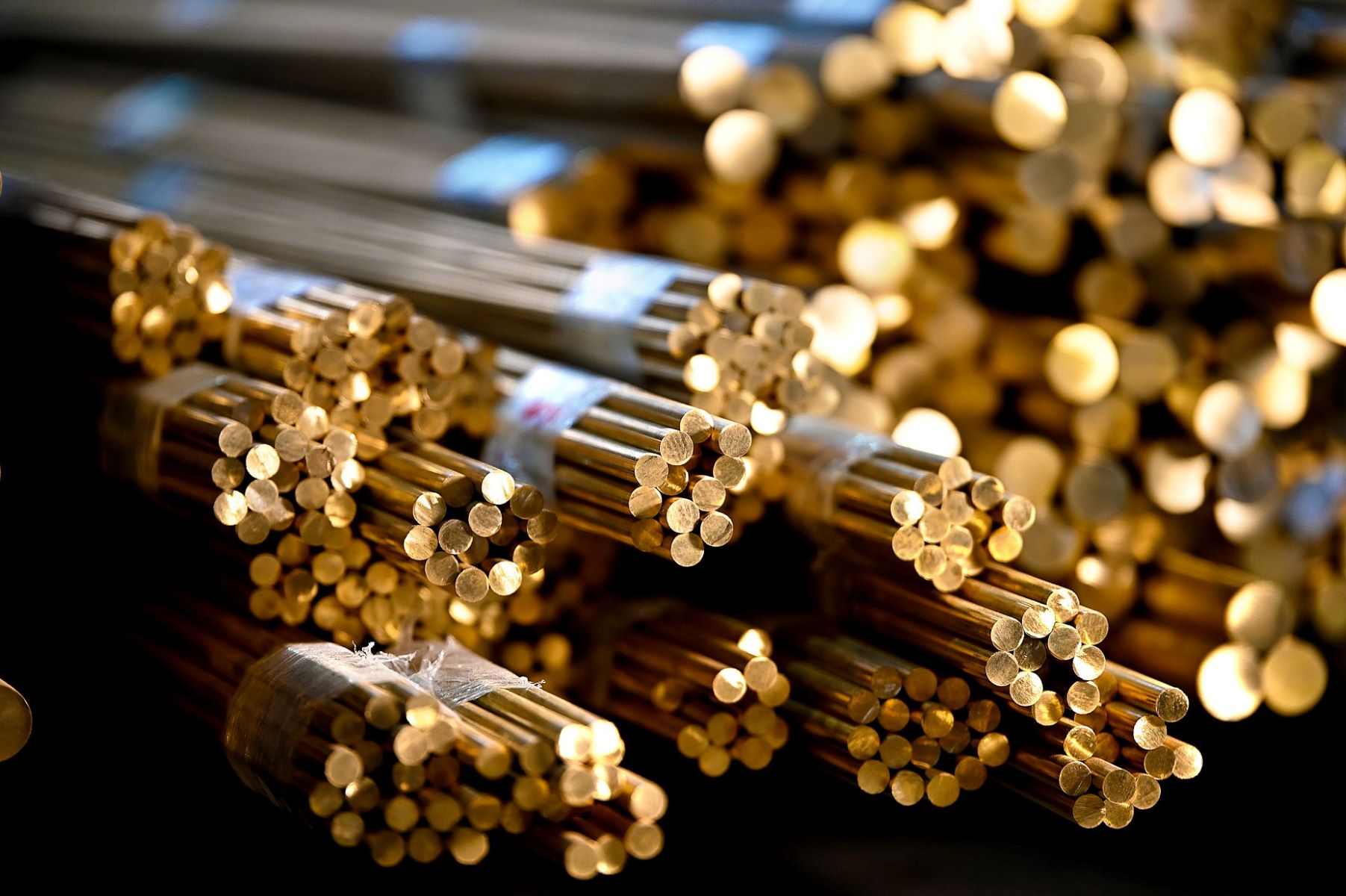
What is Bismuth Bronze? Bismuth bronze is a fascinating alloy that combines copper with bismuth, creating a unique material with distinct properties. Unlike traditional bronze, which typically includes tin, bismuth bronze offers enhanced machinability and a lower melting point. This makes it easier to work with for various applications, from intricate sculptures to industrial components. Why is it special? Bismuth bronze is known for its non-toxic nature, making it safer for use in environments where lead-based alloys might pose health risks. Additionally, it boasts excellent resistance to corrosion, ensuring longevity and durability. Whether you're a history buff, a metalworker, or just curious, bismuth bronze holds a treasure trove of intriguing facts waiting to be explored.
Key Takeaways:
- Bismuth bronze, a unique alloy of copper, tin, and bismuth, has been used since ancient times for making musical instruments, precision tools, and even coins due to its distinct properties and historical significance.
- With its non-toxic nature, environmental benefits, and potential for advanced applications in electronics, medical devices, and aerospace, bismuth bronze holds exciting possibilities for the future of sustainable materials and technology.
What is Bismuth Bronze?
Bismuth bronze is a fascinating alloy that combines copper, tin, and bismuth. This unique blend has been used for centuries, offering distinct properties that set it apart from traditional bronze. Let's dive into some intriguing facts about this remarkable material.
-
Bismuth bronze contains around 1-2% bismuth, which significantly alters its properties compared to regular bronze.
-
The addition of bismuth makes the alloy more brittle, but it also enhances its machinability.
-
This alloy has a lower melting point than traditional bronze, making it easier to cast.
-
Bismuth bronze has been used since ancient times, with artifacts dating back to the Shang Dynasty in China.
-
The alloy's unique properties make it ideal for certain applications, such as musical instruments and precision tools.
Historical Significance of Bismuth Bronze
Bismuth bronze has played a crucial role in history, particularly in ancient civilizations. Its unique properties made it a valuable material for various uses.
-
Ancient Chinese artisans used bismuth bronze to create intricate mirrors and other decorative items.
-
The alloy was also used in ancient Egypt for making statues and ceremonial objects.
-
Bismuth bronze was prized for its ability to produce a bright, silvery sheen when polished.
-
In the Middle Ages, European craftsmen used bismuth bronze to create church bells and other religious artifacts.
-
The alloy's unique properties made it a popular choice for coinage in various cultures.
Modern Uses of Bismuth Bronze
Today, bismuth bronze continues to be used in a variety of applications, thanks to its unique properties. Here are some modern uses of this fascinating alloy.
-
Bismuth bronze is used in the manufacturing of precision tools, such as calipers and micrometers.
-
The alloy is also used in the production of musical instruments, including bells and cymbals.
-
Bismuth bronze is valued for its non-toxic properties, making it suitable for use in medical devices.
-
The alloy's machinability makes it a popular choice for creating intricate components in the aerospace industry.
-
Bismuth bronze is also used in the production of specialized bearings and bushings.
Unique Properties of Bismuth Bronze
The addition of bismuth to bronze imparts several unique properties that make this alloy stand out. Let's explore some of these distinctive characteristics.
-
Bismuth bronze has a lower coefficient of friction compared to traditional bronze, reducing wear and tear on moving parts.
-
The alloy is more resistant to corrosion, making it ideal for use in harsh environments.
-
Bismuth bronze has a higher density than traditional bronze, giving it a more substantial feel.
-
The alloy's brittleness can be an advantage in certain applications, such as creating sharp, precise edges.
-
Bismuth bronze has a unique crystalline structure that gives it a distinctive appearance.
Environmental Impact of Bismuth Bronze
Bismuth bronze is not only valued for its properties but also for its environmental benefits. Here are some ways this alloy contributes to a greener world.
-
Bismuth is a non-toxic element, making bismuth bronze a safer alternative to lead-based alloys.
-
The alloy's durability means that products made from bismuth bronze have a longer lifespan, reducing waste.
-
Bismuth bronze can be recycled, further minimizing its environmental impact.
-
The alloy's corrosion resistance reduces the need for protective coatings, which can be harmful to the environment.
-
Bismuth is a byproduct of mining other metals, so using it in alloys helps reduce waste.
Challenges in Working with Bismuth Bronze
Despite its many advantages, working with bismuth bronze can present some challenges. Here are a few obstacles that artisans and manufacturers may face.
-
The alloy's brittleness can make it difficult to work with, requiring specialized tools and techniques.
-
Bismuth bronze has a higher melting point than some other alloys, necessitating more energy for casting.
-
The alloy's unique properties can make it challenging to achieve consistent results in manufacturing.
-
Bismuth bronze can be more expensive than traditional bronze due to the cost of bismuth.
-
The alloy's density can make it heavier and more difficult to transport.
Fun Facts about Bismuth Bronze
Bismuth bronze is not just a practical material; it also has some fun and interesting aspects. Here are a few quirky facts about this unique alloy.
-
Bismuth bronze can produce a rainbow-like patina when exposed to certain chemicals.
-
The alloy's unique properties make it a popular choice for creating intricate jewelry.
-
Bismuth bronze has been used in the creation of some modern art sculptures.
-
The alloy's distinctive appearance has made it a favorite among collectors of antique metalwork.
-
Bismuth bronze is sometimes used in the creation of custom-made chess sets.
Future of Bismuth Bronze
As technology advances, the potential uses for bismuth bronze continue to grow. Here are some exciting possibilities for the future of this remarkable alloy.
-
Researchers are exploring the use of bismuth bronze in advanced electronics due to its unique electrical properties.
-
The alloy's non-toxic nature makes it a promising candidate for use in sustainable building materials.
-
Bismuth bronze could play a role in the development of new medical devices and implants.
-
The alloy's machinability makes it an ideal material for 3D printing applications.
-
Bismuth bronze may be used in the creation of next-generation aerospace components, thanks to its unique properties.
The Final Word on Bismuth Bronze
Bismuth bronze, a fascinating alloy, combines bismuth and bronze to create a unique material with remarkable properties. Its low melting point and non-toxic nature make it ideal for various applications, from medical devices to artistic sculptures. This alloy's iridescent colors and crystalline structure add to its allure, making it a favorite among jewelers and collectors.
Understanding the history and uses of bismuth bronze can deepen appreciation for this extraordinary material. Whether you're a science enthusiast, artist, or just curious, bismuth bronze offers something intriguing. Its blend of beauty and functionality showcases the wonders of metallurgy.
So next time you encounter bismuth bronze, you'll know the fascinating facts behind this alloy. Dive into its world, and who knows, you might find yourself captivated by its charm.
Frequently Asked Questions
Was this page helpful?
Our commitment to delivering trustworthy and engaging content is at the heart of what we do. Each fact on our site is contributed by real users like you, bringing a wealth of diverse insights and information. To ensure the highest standards of accuracy and reliability, our dedicated editors meticulously review each submission. This process guarantees that the facts we share are not only fascinating but also credible. Trust in our commitment to quality and authenticity as you explore and learn with us.


